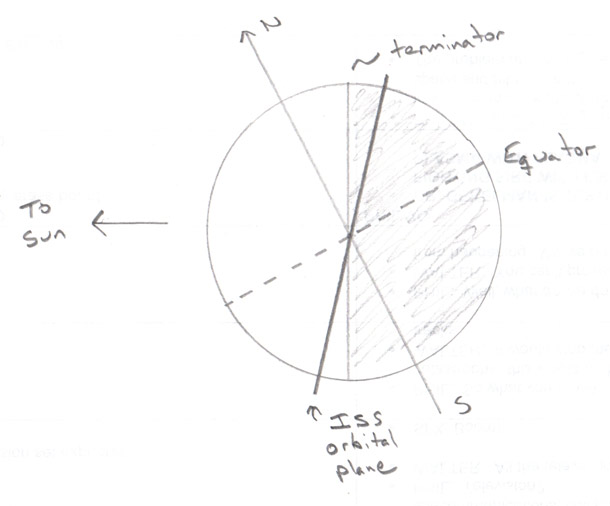Create a free profile to get unlimited access to exclusive videos, sweepstakes, and more!
Space Station Solstice

This is pretty neat: on June 6, a couple of weeks before the summer solstice, astronauts on the International Space Station pointed a camera to the north and took pictures as they orbited the Earth. Taken over the course of about an hour - 2/3 of a full orbit - this was made into a video where you can see the Sun setting and rising again. What's cool, though, is the Sun never completely sets. It dips toward the edge of the Earth, then pulls away again:
I love how the Sun shines through the gaps in the solar array.
The geometry of this is fun! Normally, as it orbits the Earth, the ISS passes behind the Earth relative to the Sun, going into the Earth's shadow. The Earth itself blocks the Sun, so it's nighttime for the astronauts. Mind you, their orbit is roughly 90 minutes, so this happens on average 18 times per day and lasts for about 45 minutes.
But the ISS orbits the Earth at an angle: the orbit is tilted relative to the Equator by a little over 50°. During the northern hemisphere summer, the Earth's north pole itself is tilted toward the Sun by about 24°. Combined, this means that for a time around the solstice the ISS can stay in daylight for an entire orbit. The Sun gets very nearly blocked by the Earth, but not quite. I drew a diagram that might help:

The circle represents the Earth. The Sun is off to the left, so the left side of the Earth is lit and the right side is dark. The north pole of the Earth is tipped toward the Sun as shown, and you can see the Equator marked as well. The "terminator" is the day/night line.
I added the rough angle of the ISS orbit - this was done by eye, but shows you how this works. As you can see, the orbit is tilted only a bit from the terminator. Because the ISS is 400 km (240 miles) above the surface, the orbit "pokes over" the edge of the Earth in the diagram (which I exaggerated a bit for clarity). Because of this, the ISS can see the Sun even when it's over the night side of the Earth: it's up high enough that the Earth doesn't block the Sun.
And that's what the video shows. At the top of its orbit (as shown in the diagram) the Sun gets very close to but not completely blocked by the limb of the Earth's horizon, and the ISS sees daylight for a full orbit!
Pretty nifty. And look: your tenth grade geometry teacher may have overstated it a bit when she said some day your life may depend on this stuff... but it does make life a lot cooler when you do understand it. Tip o' the spacesuit visor to the ESA G+ page.
Related Posts:
- Space Station star trails
- The green fire of the aurora, seen from space
- Time lapse: The stars from orbit
- Space station gives physics a boost














